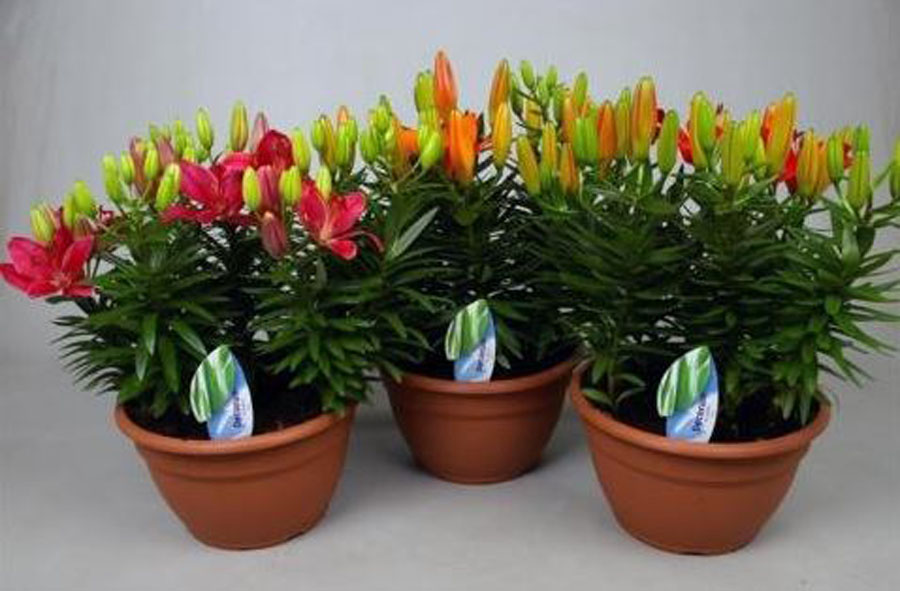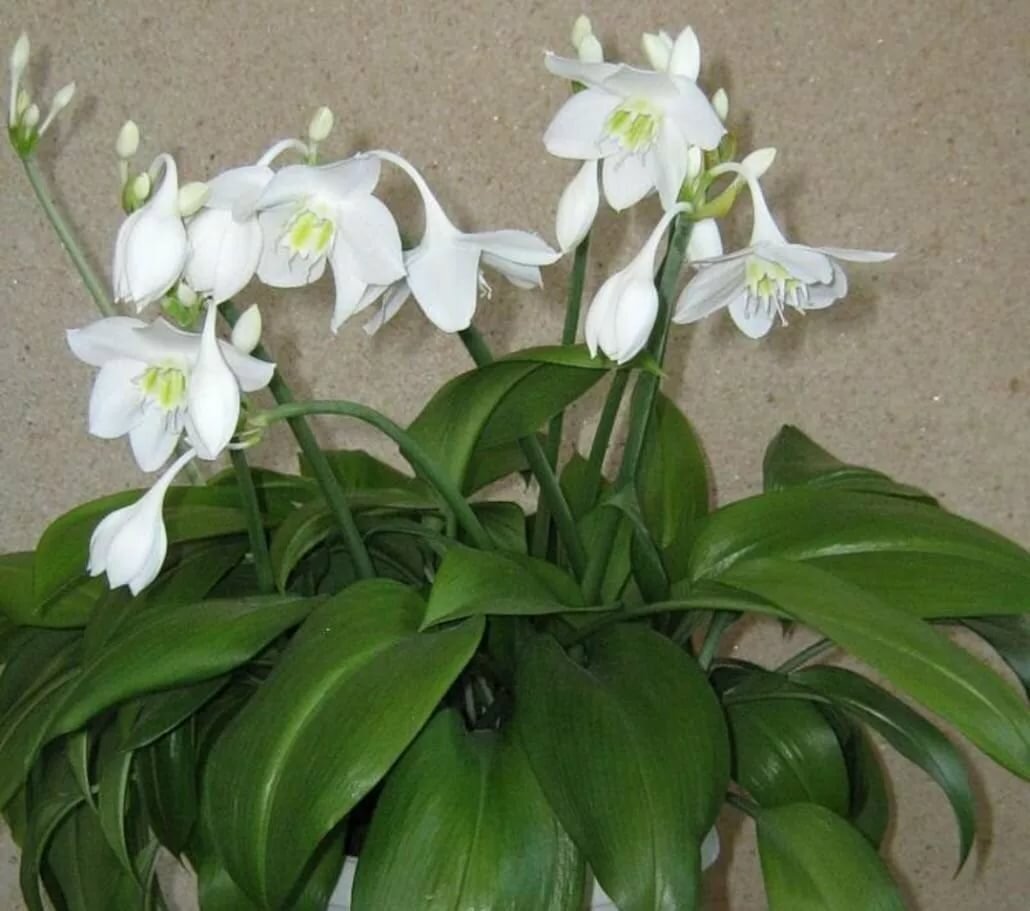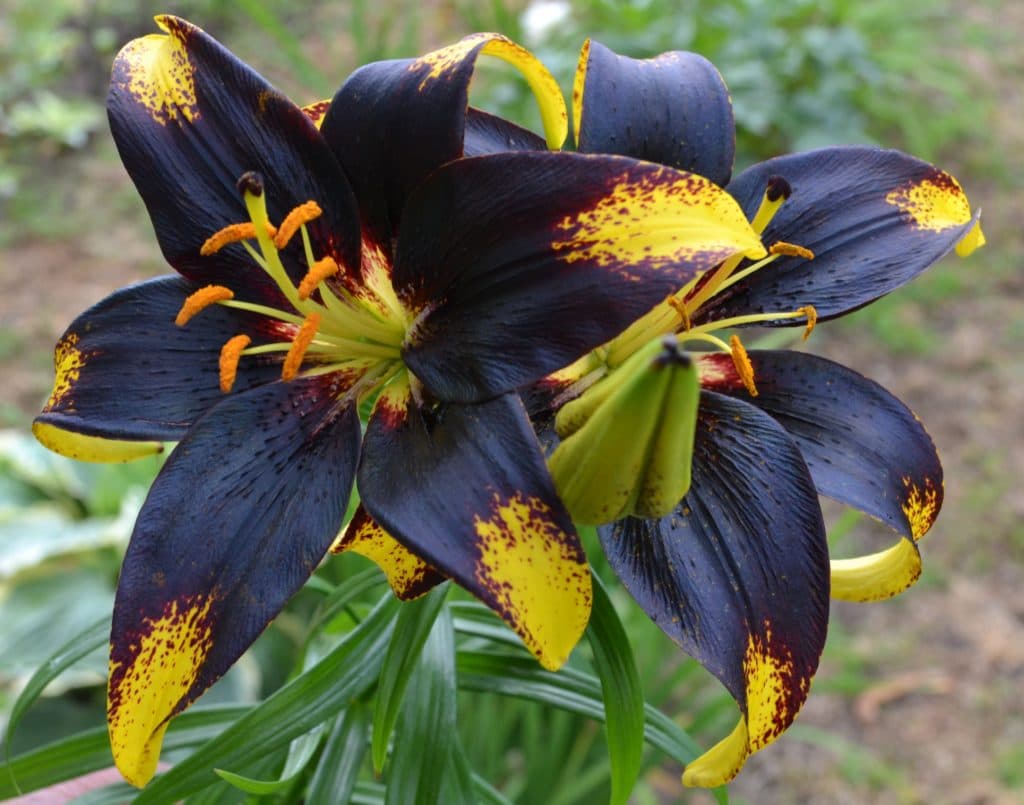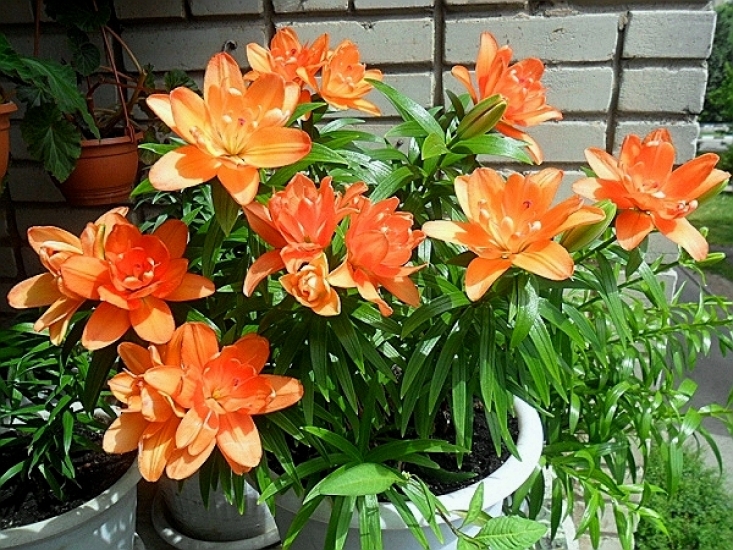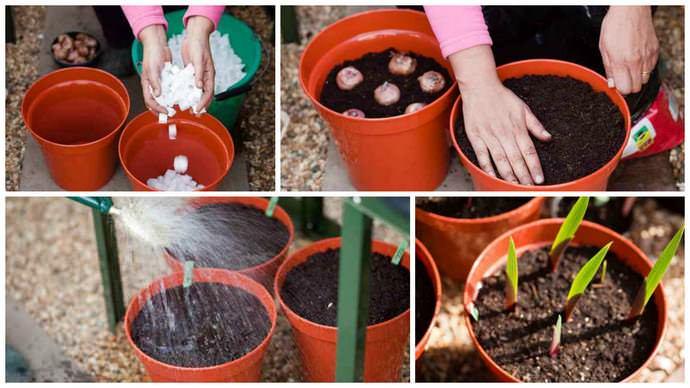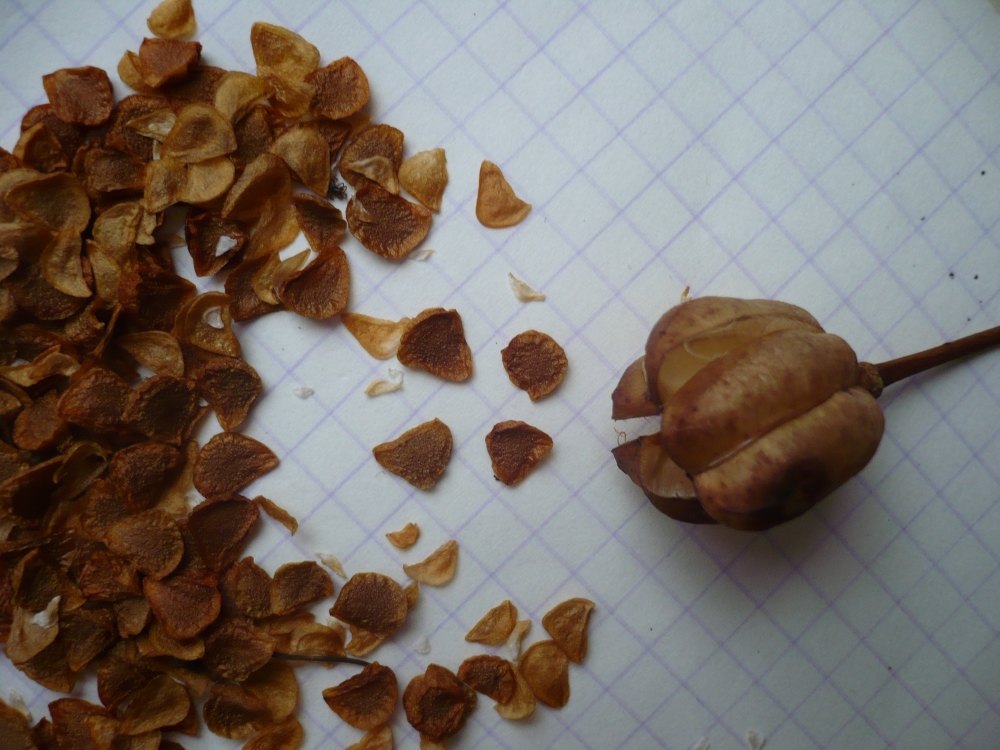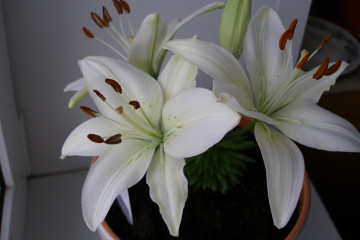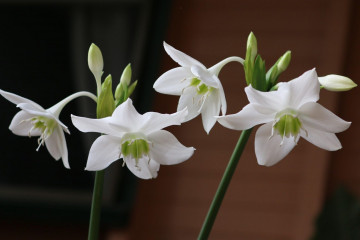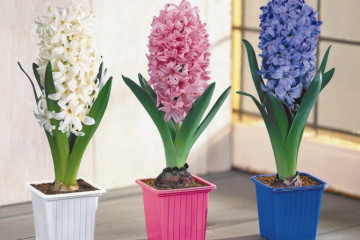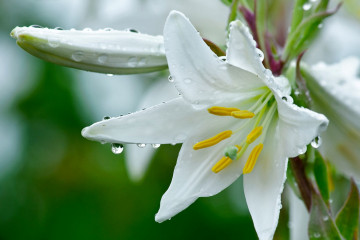Lily in a pot - home care
Content:
Lily is a flower that most women like. Its large buds, variability of colors and delicate bright aroma will not leave anyone indifferent. It takes pride of place in flower beds, but not everyone knows that it can be grown at home. A potted lily is real. And she grows up no less beautiful than in the country, and you can admire her at any time.
Lily in a pot
It is not difficult to care for a potted lily, its agricultural technology is as simple as that of flowers grown in the open field. For tall lilies, pots and flower boxes will be cramped, but if you choose the right variety, then these flowers will decorate window sills, balconies and verandas.
Lily bulbous indoor
An indoor lily can be grown up to 1.5 m in height, but this is not recommended, since this will be uncomfortable for the flower, and it will need much more care than undersized varieties. Among them, you can also choose spectacular options. Usually they pay attention to oriental varieties; for growing at home, they should be preferred over Asian indoor lilies.
White lily home
Speaking of the white house lily, most often they mean eucharis. This is a member of the Amaryllis family. Since this flower grows in the wild in South and Central America, the eucharis is often called the Amazon lily. The external signs of the plant are as follows:
- high decorativeness of bright green leaves;
- height together with peduncles at home reaches 70 cm;
- flowers with a diameter of 10-12 cm, but you can also choose a large-flowered variety;
- flowers are collected in inflorescences;
- the Amazonian variety has a delicate delicate aroma;
- the diameter of the bulbs is 5 cm, the root system is strong, so the growing pot must be of a large diameter;
- with proper care, eucharis blooms twice a year.
Lily asiatic indoor
The Asian indoor lily is a hybrid bred by breeders in the 1950s. It is unpretentious in cultivation and at home it looks the same as in the open field. In total, there are more than 1,500 varieties. The most popular ones are as follows:
- Marlene. Plant height reaches 1 m, flowering is abundant, occurs in early and mid-summer. The variety has a powerful light green stem, leaves 13-15 cm long. Since the variety is hybrid, due to some mutations, several dozen buds can form on one stem, but this does not always happen. Sometimes a lush bloom begins only for 2-3 years. The flowers reach 20 cm in diameter. Petals of a delicate color, gradually turning pink from the base to the tips;
- Lion Heart. Medium-sized variety. The length of the stem reaches 70 cm. On each stem, about 10 flowers with a diameter of up to 15 cm are formed. The peculiarity is the unique color.The petals at the base and at the tip are bright yellow, and in the middle are purple, almost black. The stem and leaves are sprinkled with purple dots;
- Asian terry. A variety of Asiatic lilies, including many varieties, which can be grown both in the home and in the garden. The stems grow up to 1 m in length, the flowers are very large with a diameter of up to 20 cm. The colors are different depending on the variety.
How many lilies bloom
Most domestic lilies bloom in mid-summer, in July. The flowering period lasts 2-3 weeks. The plant comes out of dormancy in late February - early March, buds begin to form in late May - early June. In most varieties, at the end of the flowering period, the ground part completely dies off, but not in all. For example, eucharis pleases with its foliage all year round, and it blooms twice. Therefore, it is impossible to give an exact answer to the question of how many lilies bloom. Everything is individual and depends only on the type of flower and on proper care.
How to plant a lily bulb in a pot
How to plant a lily bulb in a pot? Are there any differences from planting it in open ground? These are the questions that most often concern novice florists. Agricultural technology is similar in both cases. But for planting in a pot, you must follow a number of rules.
Planting home lily bulbs in a pot
In order for the indoor lily to take root, you need to prepare all the necessary material before planting:
- a pot, the height of which for tall plants should be at least 35 cm. For planting one bulb, an area of 15 cm² is required, therefore more than one bulb can be planted in one large pot;
- correctly selected soil. The best option is to buy a ready-made potting mix designed specifically for these flowers. For those who independently work on the composition of the soil, a mixture of turf and humus in equal parts is suitable;
- drainage;
- planting material, i.e. bulbs.
It is best to plant the bulbs in a pot in early autumn (at the very beginning of September), but you can do this in the spring as well. Planting at this time will allow the flower to adapt to new conditions and sprout.
How to grow lilies in a pot of bulbs
To properly grow these flowers at home, you need to start by choosing the planting material and the correct planting technology. The selection of material takes into account:
- the quality of the material. There should be no rotten, moldy, infested bulbs;
- purity. Each bulb is cleaned of the top layer of scales;
- only healthy roots. All sluggish are cut off;
- the length of the root system. It should not be too long, in this case it must be cut off;
- sterility. Each bulb must be treated with an insecticide before planting.
How to properly plant a bulb in the soil:
- Cover a third of the pot with pebbles for drainage, then a layer of soil.
- For each bulb, make a hole twice the height of the bulb itself.
- Carefully put the planting material in the hole, being careful not to damage the roots.
- Cover with a layer of soil.
- Moisten it with a spray bottle, you can use a growth accelerator.
- It's good to mulch.
How to grow lilies in a pot from seeds
Growing lilies from seeds is not difficult, but a little troublesome.Why this method is considered the safest is not difficult to guess, because the seeds definitely do not contain pathogens, rot, mold and other problems that the florist faces in the process of other types of planting flowers.
Sowing seeds is recommended at the end of March. They will bloom only for 2-3 years of plant life. Sowing seeds is done in a standard way, as well as for other flowering plants. Seeds are planted in the ready-made light soil mixture. Can be planted at a distance of 1 cm. Be sure to put a drainage layer on the bottom of the container. Cover it with glass or foil on top, sometimes open it for watering and airing. The temperature must be maintained at 20-25 ° C. The place should be dark. When the first true leaves appear, the flowers are transplanted into separate containers.
Lily care at home
Caring for lilies at home is pretty simple. One has only to comply with a few simple requirements, and the flowering of lilies will delight with its brightness and splendor. They must be watered throughout the entire period of active growth: vegetation and flowering. The soil should always be moist, but without moisture stagnation. Regular loosening and mulching of the soil is also required, it should not be compacted in order to better allow air to pass through. If there is a need and the flowers are too large, the stem should be tied to a support. Top dressing is another necessity during the period of activity. They need to be done regularly. For this, ready-made mineral fertilizers are suitable.
Air humidity
These plants prefer moist air, they like regular spraying. If the air is too dry, you can put a small bowl filled with water next to the flowerpot.
Air temperature
Warm air and plenty of sunshine are preferred. The optimum indoor temperature in summer should be 25 ° C.
Lily care during dormancy
Like plants grown in the open field, indoor lilies, after they have bloomed, need a period of absolute rest. Their ground part dies off, only the bulb remains.
As soon as the flowers have faded and the stems have begun to turn yellow, watering is reduced to once a week. Spraying is stopped completely. After the ground part has completely dried up, the plant is completely watered. The onion is dug out of the pot, placed in a bag with moistened sawdust and sent to the refrigerator.
How to feed lilies after flowering
After flowering, you need to continue caring for the plants, feeding. This will help the bulb to store more nutrients, and the next year the plants will become even more powerful and bloom even more beautifully. Potassium and phosphorus fertilizers are best suited, they will protect tubers from diseases and pests, and protect them from fungus.
Diseases and pests of domestic lily
Lily is a plant that is prone to various diseases. It is also loved by small insect pests. Fungal infections are another cause of poor health in these beautiful flowers.
Leaves turn yellow
There can be several reasons for the yellowing of the leaves:
- improper care;
- diseases;
- insect pests.
In the first case, the flower may not have enough moisture. A tropical plant needs regular watering, constant spraying and moist air. If this is not ensured, the leaves will turn yellow and may fall off. From nutrients, iron and phosphorus deficiencies can thus appear. To eliminate the cause, you need to select the appropriate fertilizers. But they must be applied carefully, in small doses, so as not to harm even more.
Possible diseases:
- late blight. This disease occurs when there is too much moisture.To avoid rotting of the bulbs, it is better to remove the plant from the pot, inspect the root system, remove rotting areas and transplant into new soil;
- blue mold. In addition to the yellowing of the leaves, the stem also dries up. The reason is the same - excessive watering. The way to solve the problem is similar to the previous one;
- gray rot. It is easy to notice it: first spots appear on the leaves and stem, then they turn yellow. This problem occurs due to excess moisture and too high temperature.
Why does the indoor lily not bloom?
Most often, indoor lilies do not bloom due to improper care. It is necessary to carefully analyze all indicators in order to eliminate the problem. The soil must be light and well-drained. Humidity should be kept only at the level necessary to maintain its development.
How to plant lilies
Many growers are wondering when and how to plant lilies so as not to harm them and provide even more lush bloom. Since daughter tubers periodically appear on the tubers of these plants, at this moment the problem arises of how to plant the lily and transplant it correctly.
Transplanting indoor lilies
Varieties, the bulbs of which are sent to the refrigerator or cellar for the winter, are, in any case, transplanted annually. But those that constantly grow in one place need a transplant once every two to three years. A more spacious pot is chosen, work is carried out with the roots: the excess, dried out and rotten parts of them are cut off.
How to plant lilies in the fall
How to plant a lily in the fall in such a way that no changes have occurred to it during the winter, and it safely survived a dormant period? Simply. Autumn is the best time to plant these flowers both outdoors and at home. But it is still worth carrying out this process as carefully as possible. The damaged plant will survive, but there will be no flowering next season.
When and how to divide lily bulbs
It is believed that the time when lilies can be divided is exclusively spring. But this is not the case. You can do this in August - September. The division is very simple: small children that appear on it are separated from the adult tuber, which are planted in the same way as adult plants.
Initially, the lily got its name from the ancient Greek "li-li", which means "white-white". But the breeders tried their best, and now there are a great many colors. An equally pleasant fact is that it became possible to grow them indoors, and this is not at all a complicated process. In any case, it is very pleasant that these flowers can now decorate not only the garden plot, but also the balcony or windowsill.
